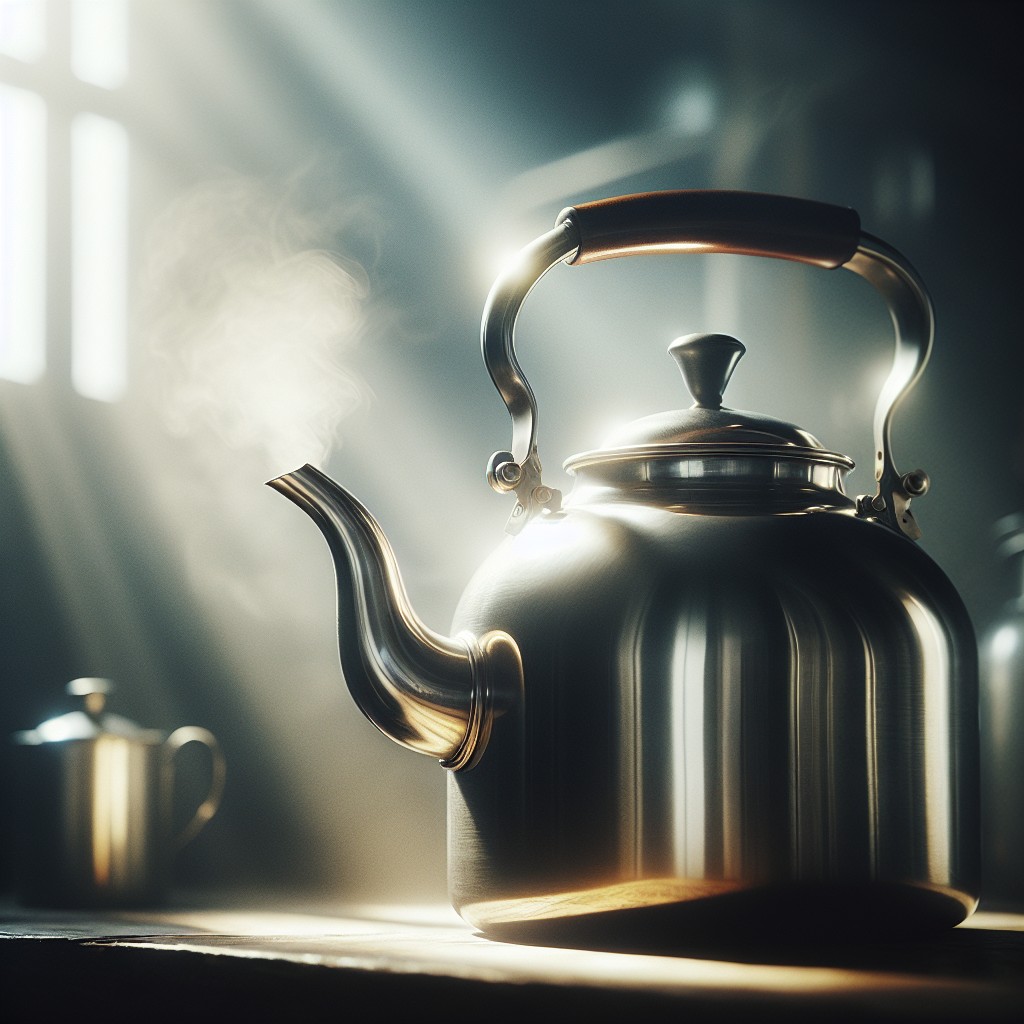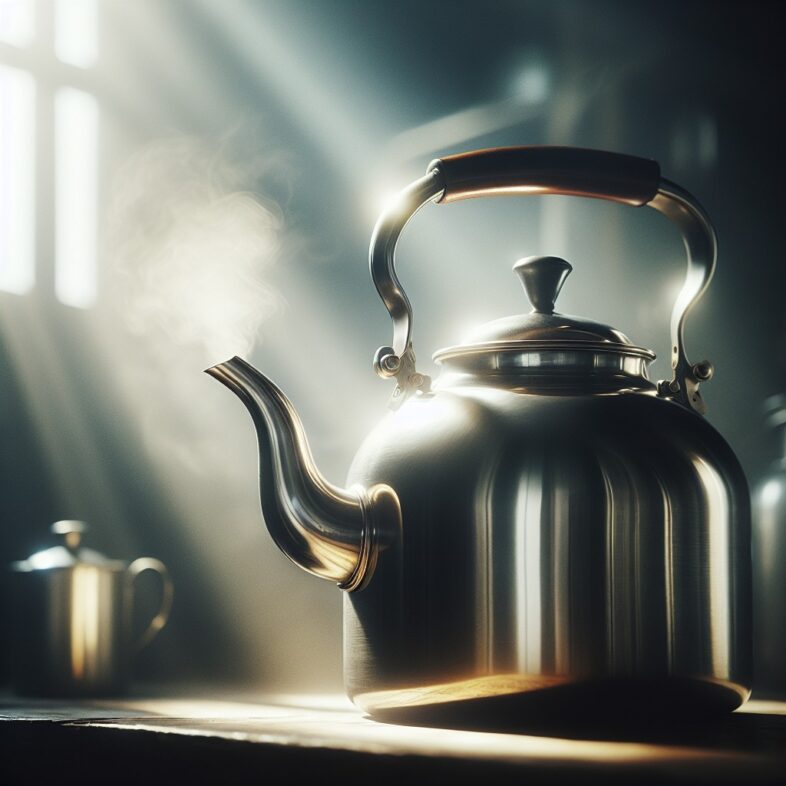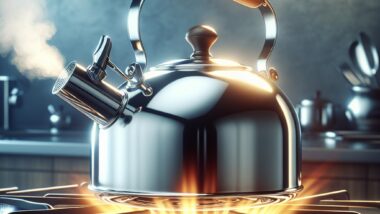How to Make a Kettle Whistle
Have you ever wondered how to make a kettle whistle at home? It’s a simple and enjoyable project that will add a touch of charm to your tea-making routine. Whether you have a stovetop kettle or an electric kettle, we have all the tips and tricks to guide you through the process of creating a DIY kettle whistle. So, why settle for an ordinary kettle when you can make it whistle? Let’s dive in!
Key Takeaways:
- Making a kettle whistle at home is a fun and rewarding project.
- You can easily modify both stovetop and electric kettles to create a whistle.
- By following our step-by-step guide, you’ll be able to enjoy the delightful sound of a whistle when your water reaches boiling point.
- Whistling tea kettles not only serve as practical tools but also add aesthetic appeal to your kitchen.
- Ensure safety and maintain your whistle attachment or spout for a prolonged lifespan.
The Benefits of a Whistling Tea Kettle
Whistling tea kettles have been a beloved staple in kitchens for years. They not only serve as a practical tool for boiling water but also add a charming touch to the tea-making experience. The whistle alerts you when the water is boiling, ensuring that you never forget to steep your tea at the ideal temperature.
Also, whistling tea kettles offer precise temperature control, allowing you to adjust the heat source or remove the kettle from it to achieve the desired temperature for different types of tea. By making your own kettle whistle, you can personalize your tea brewing routine and enjoy the satisfaction of creating something unique.
Enhancing the Tea-Making Experience
There’s something nostalgic and soothing about the sound of a kettle whistle. It adds a delightful touch to the tea-making process and creates a sense of anticipation as you wait for the water to reach boiling point. Whistling tea kettles evoke a sense of tradition and charm, making them a favorite among tea enthusiasts.
“The whistle of a tea kettle is like a gentle reminder to slow down, take a moment, and savor the art of tea-making.”
– Tea Lover Magazine
Precision Temperature Control
When it comes to brewing the perfect cup of tea, temperature plays a crucial role. Different types of tea require specific water temperatures to extract their optimal flavors. With a whistling tea kettle, you can easily achieve precise temperature control.
By listening for the whistle, you’ll know exactly when the water reaches the desired temperature. This allows you to remove the kettle from the heat source or adjust the flame intensity, ensuring that the water doesn’t overheat or cool down too quickly.
A Personalized Touch
Creating your own kettle whistle gives you the opportunity to add a personal touch to your tea brewing routine. You can choose the materials, design, and style that resonate with your preferences and aesthetics.
Whether you opt for a traditional metal whistle spout or a modern silicone attachment, making your own whistle allows you to express your creativity and showcase your DIY skills. It’s a small yet impactful way to make your tea time even more enjoyable and unique.
Summary
Whistling tea kettles offer a range of benefits, from practicality to aesthetics. They enhance the tea-making experience with their distinct whistle sound and provide precise temperature control for brewing the perfect cup of tea. By making your own kettle whistle, you can customize and personalize your tea routine, adding a touch of creativity and satisfaction to your daily ritual.
Materials and Tools Needed for a DIY Kettle Whistle
To create your own kettle whistle, you’ll need a few basic materials and tools. The specific requirements will vary depending on whether you have a stovetop kettle or an electric kettle, so we’ll provide instructions for both types.
For a Stovetop Kettle:
- A metal whistle spout
- A drill with a metal drill bit
- Pliers
- A file
- Adhesive
These materials can easily be found at a hardware store or online. Make sure to choose a metal whistle spout that fits your kettle’s spout securely.
For an Electric Kettle:
- A silicone or rubber whistle attachment
- A drill with a bit suitable for the material of your kettle
- Adhesive
Again, these materials can be found at a hardware store or online. Ensure that the silicone or rubber whistle attachment is compatible with your kettle model.
Note: When selecting materials and tools, it’s essential to choose those that are safe for use with hot liquids and can withstand high temperatures. This will ensure the durability and safety of your DIY kettle whistle.
Step-by-Step Guide to Making a Kettle Whistle
Now that you have all the necessary materials and tools, follow these step-by-step instructions to create a whistle for your kettle. Whether you have a stovetop or electric kettle, this guide will help you experiment with making your own kettle whistle.
Stovetop Kettle
- Start by drilling a hole in the spout using a metal drill bit. Make sure the hole is large enough for the whistle.
- Use a file to smooth out any sharp edges around the hole.
- Apply adhesive to the whistle spout and attach it securely to the kettle’s spout.
- Let the adhesive dry completely before testing your whistle.
With your stovetop kettle whistle attached, you can now enjoy the pleasing sound it makes when the water reaches boiling point.
Electric Kettle
- Drill a hole in the body of the electric kettle that aligns with the steam outlet. Use a drill bit suitable for the material of your kettle.
- Insert a silicone or rubber whistle attachment into the hole. Ensure it fits securely.
- Apply adhesive to the attachment to keep it securely in place.
- Wait for the adhesive to dry completely before testing your kettle’s new whistle.
With your electric kettle whistle experiment complete, heat up some water and listen for the delightful sound of the whistle when it reaches boiling point.
Remember:
Always follow the instructions specific to your kettle model and type when modifying it to make a whistle. Safety is paramount, so choose materials and adhesives that can withstand high temperatures and are safe for use with hot liquids. Take caution when drilling holes and handling hot surfaces. Regularly check the adhesive to ensure the whistle is securely attached. Clean your modified kettle regularly to prevent buildup and maintain its functionality.
By following these steps and considerations, you can successfully create a whistle for your kettle and enjoy the unique and satisfying experience of brewing tea with your homemade whistle.
Safety Considerations and Maintenance Tips
When modifying your kettle to make a whistle, it’s crucial to prioritize safety and ensure the longevity of your homemade whistle. By following these safety considerations and maintenance tips, you can enjoy your kettle whistle safely and prolong its lifespan.
Safety Considerations
Always prioritize safety when working with hot surfaces and materials.
1. Use materials and tools that can withstand high temperatures and are safe for use with hot liquids to ensure your kettle whistle is safe to use.
2. Take caution when drilling holes in your kettle’s spout or body. Use appropriate protective gear and make sure to keep your hands and body at a safe distance from the drilling area.
3. Avoid submerging the whistle attachment or spout in water, as it may damage the adhesive or affect the functionality of the whistle. Instead, wipe it clean with a damp cloth after each use.
Maintenance Tips
Regular maintenance ensures the functionality and cleanliness of your kettle whistle.
1. Clean your modified kettle regularly to prevent buildup and maintain its functionality. Avoid using abrasive materials that may scratch the whistle attachment or spout.
2. Check the adhesive regularly to ensure that the whistle is securely attached. If the adhesive starts to wear off, reapply it following the manufacturer’s instructions.
| Maintenance Task | Frequency |
|---|---|
| Clean the whistle attachment and spout | After each use |
| Check the adhesive | Every month |
By following these safety considerations and maintenance tips, you can enjoy your homemade kettle whistle safely and ensure its optimal functionality for a delightful tea-making experience.

Conclusion
Making a kettle whistle at home is a rewarding project that can elevate your tea-making experience. By creating your own whistle, you can add a touch of nostalgia and personalization to your tea routine. Whistling tea kettles not only serve as practical tools for boiling water but also offer precise temperature control and add aesthetic appeal to your kitchen.
With the right materials, tools, and safety precautions, you can easily modify your kettle and enjoy the delightful sound of a whistle when your water reaches boiling point. By following our step-by-step guide, you can create a unique and functional kettle whistle that will impress your family and friends. So why settle for an ordinary kettle when you can make your own whistle and make tea time even more enjoyable?
Whether you have a stovetop kettle or an electric kettle, the process of making a kettle whistle is simple and fun. By taking the time to personalize your tea brewing routine, you can enhance your overall tea-drinking experience. So go ahead, grab your materials, and start creating your very own kettle whistle today!


